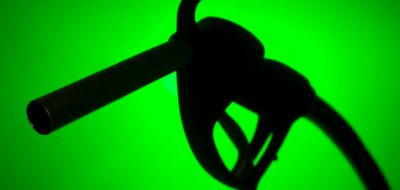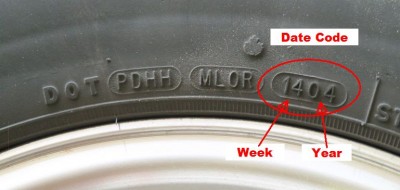By: Chris Hemer
The fuel system in your diesel motorhome is the mechanical equivalent of the circulatory system in your own body. If properly cared for, your coach’s fuel system will provide years of reliable, trouble-free service. If neglected, however, its performance can suffer—or worse yet, fail completely. The good news is, caring for your diesel’s fuel system is fairly simple, and in many cases, diagnosing small problems is, too.
Your coach’s fuel system is comprised of a fuel tank, a fuel/water separator, a transfer or “lift” pump, fuel filter, and the heart of the system, the injection pump. As you have probably already heard, diesel fuel has an affinity for water, which is caused by condensation in either the fuel station’s storage vessels, or in your coach’s fuel tank (we’ll talk more about that later). The fuel/water separator’s job, as the name would imply, is to remove the water from the fuel before it reaches any mechanical components of the fuel system. The separated water is collected in the filter housing, and can often be drained via an opening in the bottom (in other cases it is simply replaced when full if it is a combination fuel filter/water separator). Just ahead of the injection pump is the fuel filter, which prevents dirt or other debris from entering the injection pump or fuel injectors. Once the fuel has passed through the filter, the injection pump distributes the fuel to the injectors at very high pressure—as high as 18,000 psi or more, depending on the system.
Because of the tight tolerances and high pressures involved in a diesel fuel system, keeping the fuel free of water and debris should be the number one concerns for the diesel owner. To keep water out of your fuel tank, never store the coach for any period of time with anything less than a full tank; air space between the fuel surface and the tank’s ceiling can allow water vapor to form—especially where the ambient temperature varies. And you should always maintain/replace your fuel/water separator at the recommended intervals.
Regular maintenance applies to the fuel filter too–—dirt can cause damage to the injection pump and/or can clog an injector, which at the least will cause poor fuel distribution to that cylinder. At the worst, it can clog the injector completely and even cause engine damage over time. Moreover, repairs to the injection pump or fuel injection replacement can cost a lot of money in both parts and labor ($2,000-$5,000 depending on the engine and the work performed), so it pays to be regular with your scheduled maintenance. Diesel engine manufacturers such as Caterpillar, Cummins and Detroit Diesel recommend that you adhere to the maintenance schedule in the service manual that should have been included with your coach. If you already own your coach and don’t have a service manual, you can obtain a copy from the manufacturer. If you are purchasing a new coach, insist that the dealer supply you with a service manual if it’s not already part of the bargain.
Diesel Fuel System Troubleshooting
One of the most common problems related to a diesel’s fuel system are hard starting and/or low power. These can be caused by a number of factors, including a clogged fuel filter, a faulty lift pump or air in the fuel, which could be caused by a cracked line or a loose fitting.
If it’s been a while since you replaced the fuel filter, start here first. If, on the other hand the coach won’t start or runs rough after you service the fuel system, you may have admitted air into the fuel system. On older, mechanical lift pump fuel systems, the fuel filter must be filled before it is re installed. On later model, electronically controlled coaches, the fuel filter can be installed dry, but the recommended priming procedures must be followed to ensure success.
If neither of the above situations apply to you, the lift pump could be at fault. Isolating the problem on earlier, mechanical lift pump engines is fairly easy if you are familiar with the inner workings of your coach. Most of these pumps are equipped with a lever or plunger that can be depressed manually; simply crack a fuel line on the pressure side of the lift pump, and start cycling the pump by hand. If nothing comes out, the lift pump has probably gone south; if foamy fuel comes out, there is air in the system. If your lift pump has no manual priming provision, you can ask a friend to crank the starter (provided you are clear of any moving parts, of course) to see if any fuel comes from the line. It’s generally accepted that you can crank the engine for up to 30 seconds at a time, but after that, you should give the engine a three to five minute rest before cranking it again.
It is important to note that you should never attempt fuel system troubleshooting as described above on later model (around 2002 and up, depending on manufacturer) “common rail” engines. The fuel systems on these engines are always under extreme pressure (in the neighborhood of 18,000 psi), so cracking a fuel line on one of these systems when you don’t know what you’re doing can result in serious injury or even death. Besides that, these engines are computer controlled so there could be any number of factors that could be causing a no-start situation, including engine position and fuel pressure sensors. It’s best to bring your coach to an authorized service center to determine the problem.
Additives and Alternate Fuels
As we eluded to earlier, many of the problems in a diesel coach’s fuel system can be attributed to the fuel itself. If you use the recommended fuel from reliable sources, poor quality or dirty fuel shouldn’t be a problem. If you travel to out of the way places, however, keeping a can of cetane booster on hand isn’t a bad idea. Cummins specifies a minimum cetane number of 42—but in cold weather, a higher number may be required.
Most of us don’t like to travel in the dead of winter, but if you are planning a trip in cold weather, you should also add what is called a pour point depressant or flow improver and/or a wax crystal modifier. These will help fuel to flow properly, and will also prevent the formation of paraffin wax crystals, which can clog the filter and result in low power. Paraffin wax occurs naturally in the crude oil from which fuels are distilled, and according to Cummins literature, its content can vary greatly depending on the fuel. It is important to remember that winter fuel additives should be added to the fuel system before you encounter very cold weather (20 degrees F or colder), as once wax crystals form, it is too late; the product can’t dissolve the crystals—it only helps prevent their formation. When in doubt, contact your engine’s manufacturer or dealer regarding cold weather travel recommendations.
There’s been a lot of talk in the news and elsewhere about bio-diesel. By definition, bio-diesel fuels are methyl/ethyl ester-based fuels derived from a variety of natural sources, such as vegetable oils, cooking oils, even animal fats. Soy Methyl Ester (SME) is the most common diesel fuel in the U.S., and is derived from soybean oil. In the short term, companies like Cummins have determined that bio-diesel reduces power and fuel economy somewhat (due for the most part to reduced fuel atomization) but the long-term effects have yet to be realized.
Obviously, there is a major difference between operating on 100 percent bio diesel and bio diesel/petro diesel fuel blends. Most such blends available at the pump are between B10 (10% biodiesel) and B20, which are acceptable to most diesel engine manufacturers. The concern is that biodiesel concentrations higher than this may have
an adverse affect on the engine’s performance and the fuel system integrity/durability. Areas of concern include low temperature operability, poor fuel economy, and storage/thermal stability. Mechanically speaking, high concentrations of bio-diesel can also result in blocking of fuel injector nozzles, injector coking, filter plugging and reduced service life of the fuel pump and fuel system, according to Cummins.
Take good care of your diesel’s fuel system, and the odds are good it will take good care of you.
Read more Tech Tips & Great ideas…



